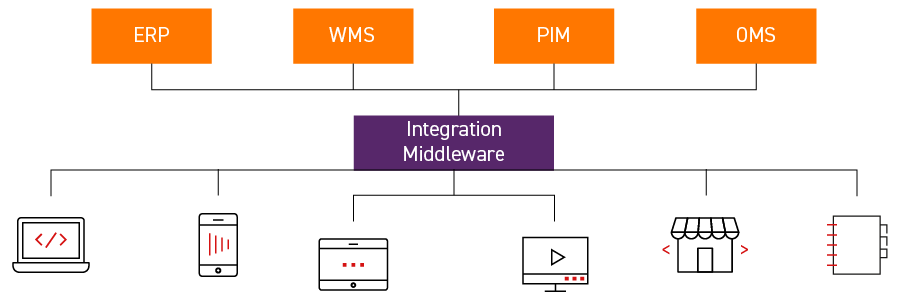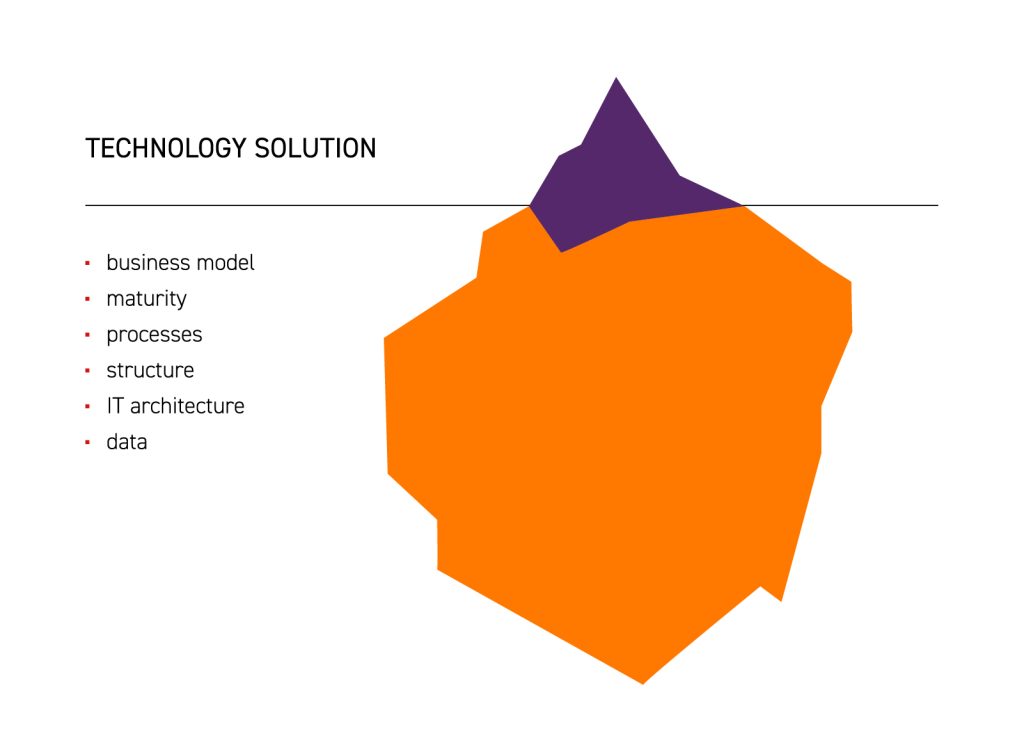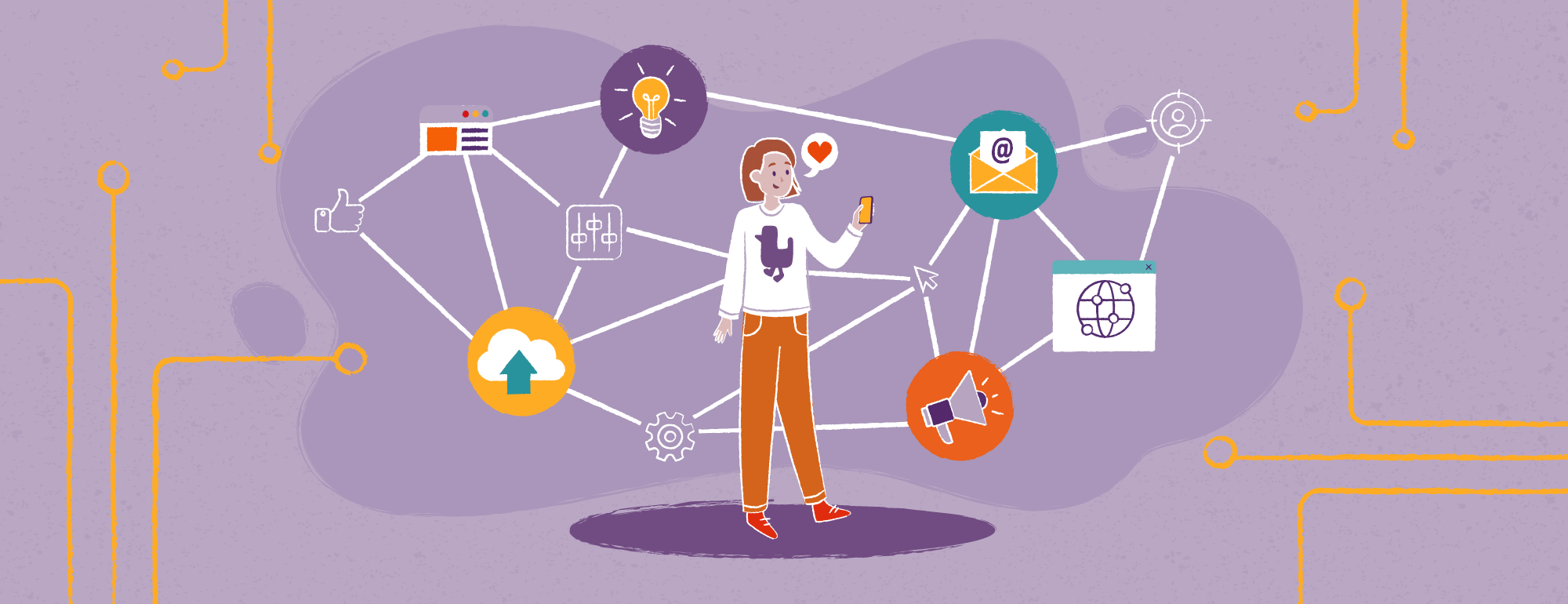Omnichannel Retail – Everything You Should Know
Imagine walking into a retail wonderland where every path leads to a personalized shopping adventure, tailored to your every whim and fancy. This isn’t a fantasy; it’s the reality of today’s omnichannel retail world, where customers are like explorers, charting their own unique courses through a myriad of buying channels. Each customer’s journey is a dynamic mixtape of experiences – a scroll through an Instagram store here, a visit to a cozy brick and mortar shop there, topped off with a seamless checkout through a mobile app.
As we dive into the world of the omnichannel retail experience, remember, it’s not about chasing customers across different platforms; it’s about creating a harmonious rhythm that aligns with their changing tunes. Let’s discover how to orchestrate a shopping experience that not only meets but anticipates the needs and expectations of these modern-day retail maestros.
TL, DR
An omnichannel strategy is the integration of all sales channels to create a consistent customer experience. Omnichannel lends itself to a wide variety of business models and brings benefits to both the business and the customer, but requires implementing the right solutions and overcoming process and organizational challenges.
What’s inside?
- What is Omnichannel Retail?
- What Counts as a Channel in Omnichannel?
- Why is Omnichannel Experience in Retail Important?
- Omnichannel vs. Multichannel Retailing
- Is Omnichannel Retail Suitable for Every Business?
- Omnichannel Retail Examples
- Benefits of Omnichannel Retail
- Omnichannel Retail Challenges
- Omnichannel Retail Solutions
- Successful Omnichannel Retail Strategy
- Omnichannel Retail Analytics
- Omnichannel Retail Trends
What is Omnichannel Retail?
Omnichannel for retail combines online and offline shopping in an integrated way. Omnichannel retail focuses its operations around customer satisfaction in all aspects of the customer journey. Successful omnichannel retailers offer customers the flexibility to choose where they need to make their purchases easier in multiple channels.
What Counts as a Channel in Omnichannel?
An omnichannel sales channel is much more than a physical store, website or social media account. It is any place where you reach a customer, enabling them to purchase and/or learn about your products in a consistent and synchronized way. For example, a computer is not a channel because a user can use it both to browse the website and interact with a chatbot. And these are already separate channels.
The customer path to purchase is far from straight. Consumers jump between sales channels, so it’s worth making sure your brand communication or offer description is consistent at every point.
Why is Omnichannel Experience in Retail Important?
E-commerce sales have been growing steadily for several years, but the boom came during the COVID-19 pandemic, when in-store shopping was limited and sometimes impossible. In the U.S, the value of online purchases increased by as much as 55% over pre-pandemic levels. Companies that previously relied on brick-and-mortar stores had to expand their sales channels to include online stores or a mobile app. The pandemic is over, but customers are increasingly willing to buy online.
Omnichannel experience in retail offers flexible services to customers that offer them greater choices in their buying decision. In addition, 72% use more than one channel to search for a product. Customers interact with a brand on the channels of their choice and enjoy connected, personalized experiences.
In today’s retail environment, customers expect a seamless shopping experience that can easily be customized, regardless they use a desktop or mobile device. One study found that 80% of respondents say a seamless experience is the most important factor. That’s the clearest sign that omnichannel shopping experience really matters.
Omnichannel vs. Multichannel Retailing
Omnichannel, multichannel – is there a difference? Multichannel can be compared to musicians playing their own tune individually to the audience. There is no synchronization or coordination between them. Omnichannel, on the other hand, is like an orchestra, where everyone plays their part, but the whole sounds cohesive, no matter where the listener is sitting in the audience.
Multichannel is also selling in multiple places, but the difference is that each channel is a separate entity and the data between them is not connected.

Multichannel is the opposite of omnichannel, which focuses on integrating sales channels and customer data.
Is Omnichannel Retail Suitable for Every Business?
Whether omnichannel strategy is suitable for every business model depends on several factors, including the nature of the products or services offered, the target customer base, and the company’s resources. For businesses with a diverse range of products and a broad customer demographic, omnichannel retail can be highly beneficial, offering multiple touchpoints to reach and engage customers effectively.
However, for smaller businesses or those with a very niche market, the investment in integrating multiple channels might not yield proportional benefits. Additionally, implementing an omnichannel strategy requires significant resources, both in terms of technology and staff training. Therefore, while omnichannel retail presents vast opportunities for enhancing customer experience and expanding market reach, it may not be a one-size-fits-all solution and should be considered in the context of specific business needs and capabilities.
Omnichannel Retail Examples
Now that you know that an omnichannel retail strategy can work for different business models, let’s take a look at some good examples of omnichannel retail.
LPP
One of the largest clothing companies, based in Poland but operating in dozens of foreign markets, is known for its seamless omnichannel services. Shoppers can easily switch between their preferred channels – brick-and-mortar stores, mobile app, or website. To keep their shopping history up to date and receive special offers, customers can also scan their unique code at physical stores.

Starbucks
Once struggling with millions of digitally disconnected customers, Starbucks embraced digital channels in its business model. The mobile app and emails boost the in-store sales channel with coupons, special offers and events.
Rossmann
One of Europe’s most popular drugstore chains has been implementing new technologies for years. Today, customers have several ways to purchase products. They can order online with delivery or in-store pickup, buy products in one of the thousands of stores (and scan a loyalty card), or buy products in-store using an app. The company is testing other solutions to make shopping easier, such as smart parcel lockers for order pickup, a virtual assistant, or a smart shopping cart.
SIG
SIG – one of Europe’s leading suppliers of building materials – is a good example of how an omnichannel strategy is not just reserved for clothing or beauty brands, but also for B2B sales. The building materials industry has traditionally lagged behind emerging online shopping trends, but ubiquitous digitization has changed that too.

SIG has implemented a digital platform that is customized and connected to the company’s various channels for a seamless experience. SIG customers often start the buying process in one channel and finish it in another. For example, a customer may call a sales representative to order some materials and then complete the transaction on the digital platform. The move to an omnichannel retail strategy paid off – the company saw a 142% increase in revenue from online sales channels.
Benefits of Omnichannel Retail
Diving into the world of omnichannel in the retail industry opens a treasure trove of benefits, not just for the savvy shopper but also for the forward-thinking retailer. It’s like unlocking a secret code to customer satisfaction and business success. Here are some key benefits that highlight why omnichannel retail is more than just a trend, but a transformative approach to modern commerce.
Seamless Customer Experience
Customers enjoy the flexibility to interact with your brand across different channels (online platforms, brick and mortar store, on mobile apps, etc.), ensuring a consistent and integrated shopping journey.
Enhanced Customer Insights
Omnichannel strategy provides a wealth of data, revealing in-depth insights into customer behaviors and preferences, enabling more targeted and effective, omnichannel retail marketing campaigns.
Personalized Engagement
Leveraging customer essential data from various channels allows for personalized customer experience and promotions, leading to more meaningful customer relationships and interactions.
Increased Sales Opportunities
With multiple channels at play, businesses can capture more sales opportunities, reaching customers wherever they are, online or offline.
Stronger Brand Loyalty
Consistent and positive experiences across all channels contribute to building stronger customer engagement and loyal customers base.
Operational Efficiency
Integrating different sales and marketing channels streamlines operations, reduces redundancies, and can lead to cost savings in the long run.
Market Expansion
Omnichannel commerce breaks down geographical barriers, opening up new markets and expanding the customer base.
Each of these benefits contributes to a robust and dynamic retail environment, where customer needs are met with precision and businesses thrive on innovation and adaptability.

Omnichannel Retail Challenges
Venturing into an omnichannel strategy certainly sets the stage for transformative growth, but it also brings its share of challenges. These hurdles, spanning organizational, technological, and process aspects, require strategic navigation to ensure successful implementation. Let’s break down these challenges into more detail.
Organizational Challenges
It’s crucial to align different departments towards a unified omnichannel retail strategy. One of the biggest hurdles is to overcome departmental silos and fostering cohesive communication and collaboration.
Technological Challenges
Omnichannel retail strategy requires the integration of various systems and platforms for seamless function across channels, such as PIM (Product Management Systems) or B2B/B2C Platforms. Companies must synchronize data between the online store and offline channels and ensure real-time inventory updates.
Process Challenges
Another group of challenges refers to processes and requires redesigning workflows to accommodate the omnichannel retailing approach. Existing processes such as order fulfillment and cross channel customer support must adapt for agility and flexibility.
Each category of challenge requires a thoughtful approach, balancing the intricate dynamics of a modern retail environment with the ever-evolving needs of the consumer.
Omnichannel Retail Solutions
Omnichannel retail experience can’t be implemented without strategy, plan and the right technology. The goal is to seamlessly blend various shopping channels to create a unified customer experience.
- Integrated E-commerce Platforms: Centralized platforms that unify online, mobile, and in-store shopping experiences.
- Customer Relationship Management (CRM) Systems: Tools for tracking customer interactions across all channels, providing valuable insights for personalized omnichannel marketing.
- Inventory Management Systems: Real-time, inventory visibility, tracking, and management across all sales channels.
- Point of Sale (POS) Systems: Advanced POS systems that integrate in-store and online sales data.
- Mobile Shopping Apps: Apps that offer a seamless shopping experience on a mobile device, including features like in-app purchases and personalized notifications.
- Social Media Integration: Leveraging the social media platforms and platforms for marketing and direct selling opportunities.
- Data Analytics Tools: Analyzing customer data from various channels with tool like Power BI to understand buying patterns and preferences.
- Cloud-based Infrastructure: Flexible and scalable solutions for integrating various retail systems and data storage.
- Omnichannel integration – building a seamless omnichannel retail experience requires an effective integration of all above mentioned solutions and platforms. It ensures multiple benefits such as quicker order processing, consistency or error elimination.

Each of these solutions plays a vital role in creating a retail omnichannel environment that is efficient, customer-centric, and capable of adapting to the ever-changing retail landscape.
Successful Omnichannel Retail Strategy
In omnichannel retail, if you have been surveying your customers across their entire buying journey, you can identify where friction occurs. The best way to evaluate omnichannel shopping strategy is to analyze the customer journey and make the necessary enhancements to create a seamless shopping experience.
Being aware of the omnichannel retail challenges is already a big step forward improving the omnichannel business model. Then it’s time to put everything into strategy and create an action plan.
Channel Selection for Customer Segments
Identify the channels most used by your customer segments. Retailers typically start with broad platforms like Amazon, Google, and even social media, targeting a wider audience before focusing on more specific channels as they grow. Understanding customer behavior and preferred shopping sites is crucial.
Customer Experience Pain Points
Analyze customer feedback across various stages of their journey to identify and address negative experiences. Maybe you’ll need to improve the in store experience or enhance shopping online. Utilize feedback systems like NPS or CSAT surveys to improve customer satisfaction.
Company and Team Support
Ensure support from decision-makers and employees for the transition to an omnichannel customer experience model. Assess if your team has the necessary skills and understands operational processes for effective implementation.
Technological Assessment
Evaluate your current IT architecture to identify limitations that could hinder the omnichannel transition. Determine if minor tweaks or a major overhaul are required for effective integration.

Action Plan Development
Formulate a concrete action plan, considering whether to manage the project internally or seek external assistance. This decision will significantly influence the project’s scope.
Continuous Optimization
Regularly monitor and optimize based on changing customer needs, technological advancements, and business environment. Set key performance indicators to assess the omnichannel model’s impact on sales, client numbers and team operations.
Enhancing Pre- and Post-Purchase Experience
Facilitate self-service options for customers by providing necessary resources for independent problem-solving and purchase decisions. Use tools like CES surveys to gauge the ease of customer transactions and issue resolution.
Omnichannel Retail Analytics
Omnichannel analytics stands at the heart of a successful omnichannel strategy, serving as the compass that guides retailers through the complex landscape of modern consumer behavior. By harnessing the power of data collected across various customer touchpoints together, retailers gain invaluable insights into customer preferences, buying habits, and engagement patterns.
This rich tapestry of information enables businesses to craft personalized customer experiences, fine-tune their marketing strategies, and make informed decisions about product placement and inventory management.

Omnichannel analytics is not just about gathering data; it’s about decoding the stories behind the numbers, revealing the nuances of the customer journey, and unlocking opportunities for growth and enhanced customer satisfaction. It’s a critical tool that empowers retailers to stay ahead in the highly competitive and ever-evolving retail market, ensuring that every decision is data-driven and every customer interaction is optimized for success.
Omnichannel Retail Trends
Omnichannel retail is constantly evolving and adopting the latest technologies. It’s hard to cover all the emerging trends, so let’s take a closer look at some of the most popular ones.
Transforming Parts of Physical Stores into Showrooms
With this approach, the store does not need to have an extensive warehouse and can display more products. The customer, in turn, can realize their need to physically inspect products, as well as order them online at their own convenience. The showroom thus supports cross channel and conversions in other channels. This is an implementation of the phygital concept, which seamlessly blends the digital and physical halves of the shopping realm together.
Marketplace
Integrating with popular marketplaces provides an opportunity to expand your audience by reaching thousands of new customers who prefer one-stop shopping on well-known and established e-commerce marketplaces.

Automation & AI Solutions
Major retail companies are investing increasingly in solutions that automate pricing, assortment selections and product recommendation processes, among others. Automation and AI are also playing a huge role in optimizing the supply chain, recommendation systems and many more aspects.
Opening Up in Foreign Markets & Going Cross-Border
A few years ago, “we don’t ship abroad” was a common slogan. Today, thanks to the development of online payments and other solutions, more and more companies are both willing and able to open up sales channels in foreign markets.

Embrace Omnichannel Retail Now
As we look toward the future of omnichannel retail growth, it’s clear that adaptability and forward-thinking will be key. Advancements in AI, machine learning, and possibly augmented reality are set to deepen customer insights and enrich shopping experiences. The focus will remain firmly on personalization and seamless integration across all channels. Embracing these innovations while staying customer-centric will be crucial for those aiming to succeed in the evolving landscape of omnichannel retail.








